
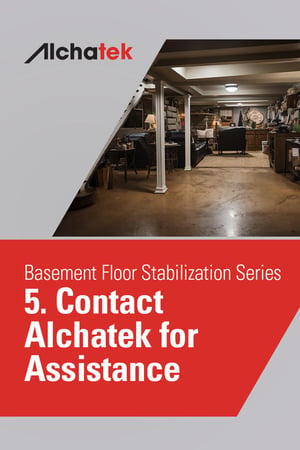 Your home is more than just a structure; it's a sanctuary, a place where memories are made and cherished. Ensuring its stability and safety is paramount. If you've noticed cracks, unevenness, or other signs of instability in your basement floor, it's time to take action.
Your home is more than just a structure; it's a sanctuary, a place where memories are made and cherished. Ensuring its stability and safety is paramount. If you've noticed cracks, unevenness, or other signs of instability in your basement floor, it's time to take action.
Why Basement Floor Stabilization Matters
The foundation of your home, including the basement floor, plays a critical role in ensuring the overall structural integrity of your property. Voids or gaps beneath the floor can lead to significant issues, from water intrusion to severe structural damage. Addressing these issues promptly not only ensures the safety of your home but also preserves its value.
Why Choose Alchatek?
At Alchatek, we specialize in manufacturing advanced construction technologies, including polyurethane foam for basement floor slab void fill and stabilization. Our expertise is backed by years of experience and a commitment to excellence.
- Expert Guidance: Our team will help you understand the root causes of your basement floor issues and the best solutions tailored to your specific needs.
- Reliable Contractor Referrals: We can refer contractors who are trained in the latest techniques and best practices for basement floor stabilization. You can trust that any contractor we refer will deliver top-notch service and results.
- Quality Assurance: Our reputation is built on the quality of our products and the reliability of contractors we refer. When you choose Alchatek, you're choosing peace of mind.
Take the Next Step
Don't let basement floor issues compromise the safety and value of your home. Contact Alchatek today for expert guidance and a referral to a qualified contractor who can help.
Call 404-618-0438 or fill out this contact form today.




 Your home's basement floor serves as an integral component of the structure, playing a pivotal role in maintaining the overall stability and integrity of the house. However, like all parts of a home, it's subject to wear and tear, and there are times when it might need professional attention. Recognizing these moments is crucial not just for the health of the structure but also for the safety of its inhabitants.
Your home's basement floor serves as an integral component of the structure, playing a pivotal role in maintaining the overall stability and integrity of the house. However, like all parts of a home, it's subject to wear and tear, and there are times when it might need professional attention. Recognizing these moments is crucial not just for the health of the structure but also for the safety of its inhabitants.

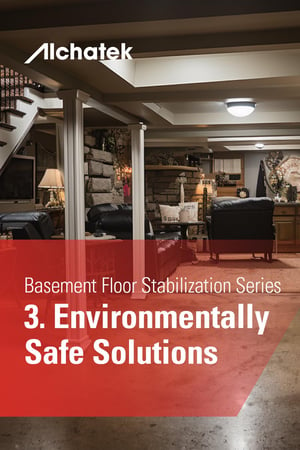 Ensuring the stability of your basement floor is an imperative task for every homeowner. Yet, in our pursuit of a sturdy home, it is crucial not to overlook the environmental ramifications of repair materials and methods. Balancing these dual responsibilities can be challenging, but with informed choices, homeowners can achieve both goals seamlessly.
Ensuring the stability of your basement floor is an imperative task for every homeowner. Yet, in our pursuit of a sturdy home, it is crucial not to overlook the environmental ramifications of repair materials and methods. Balancing these dual responsibilities can be challenging, but with informed choices, homeowners can achieve both goals seamlessly.
 The basement, being one of the most vital components of a home, requires solutions that are both efficient and long-lasting when it comes to addressing unstable floor slab issues. Traditional methods of repair, although effective, can often be invasive, time-consuming, and expensive. Enter polyurethane foam—a revolutionary solution to basement floor slab stability issues.
The basement, being one of the most vital components of a home, requires solutions that are both efficient and long-lasting when it comes to addressing unstable floor slab issues. Traditional methods of repair, although effective, can often be invasive, time-consuming, and expensive. Enter polyurethane foam—a revolutionary solution to basement floor slab stability issues.
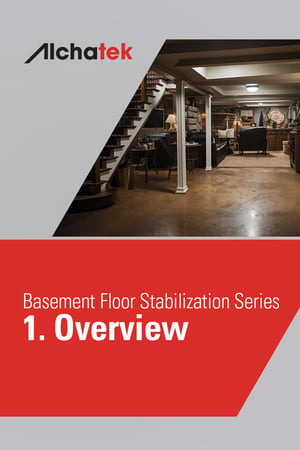 For many homeowners, a basement represents more than just a foundation—it's an extension of their living space, a storage haven, or even a cozy retreat. Ensuring the structural integrity and safety of your basement is paramount, not just for the sake of the basement itself but for the overall health and well-being of your home and its inhabitants. The basement floor is a critical component that plays a significant role in ensuring your basement is dry, stable, and safe.
For many homeowners, a basement represents more than just a foundation—it's an extension of their living space, a storage haven, or even a cozy retreat. Ensuring the structural integrity and safety of your basement is paramount, not just for the sake of the basement itself but for the overall health and well-being of your home and its inhabitants. The basement floor is a critical component that plays a significant role in ensuring your basement is dry, stable, and safe.
 In the world of warehouse and distribution center management, the condition of your concrete slabs is not a minor detail—it's a critical component that impacts safety, equipment longevity, and operational efficiency.
In the world of warehouse and distribution center management, the condition of your concrete slabs is not a minor detail—it's a critical component that impacts safety, equipment longevity, and operational efficiency.
 Choosing the right contractor for slab stabilization and leveling work in a warehouse or distribution center is a decision that carries significant weight. The quality of the repair work not only affects the immediate operational efficiency but also has long-term implications for safety, equipment longevity, and overall maintenance costs. A poor choice can lead to subpar work, requiring additional repairs and causing more operational disruptions. On the other hand, a skilled contractor can efficiently resolve floor issues, minimizing downtime and maximizing the lifespan of the repair.
Choosing the right contractor for slab stabilization and leveling work in a warehouse or distribution center is a decision that carries significant weight. The quality of the repair work not only affects the immediate operational efficiency but also has long-term implications for safety, equipment longevity, and overall maintenance costs. A poor choice can lead to subpar work, requiring additional repairs and causing more operational disruptions. On the other hand, a skilled contractor can efficiently resolve floor issues, minimizing downtime and maximizing the lifespan of the repair.
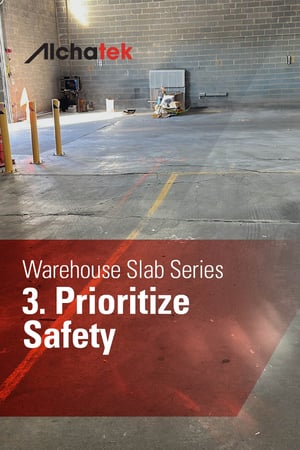 In the fast-paced environment of a warehouse or distribution center, safety is a paramount concern. One often overlooked factor that can significantly impact safety is the condition of the floor. Uneven or unstable floors can create hazards that put employees at risk. Tripping, slipping, and falling are just a few of the accidents that can occur when floors are in poor condition. Additionally, material-handling equipment like forklifts can tip over or lose control, leading to more severe accidents or even fatalities.
In the fast-paced environment of a warehouse or distribution center, safety is a paramount concern. One often overlooked factor that can significantly impact safety is the condition of the floor. Uneven or unstable floors can create hazards that put employees at risk. Tripping, slipping, and falling are just a few of the accidents that can occur when floors are in poor condition. Additionally, material-handling equipment like forklifts can tip over or lose control, leading to more severe accidents or even fatalities.
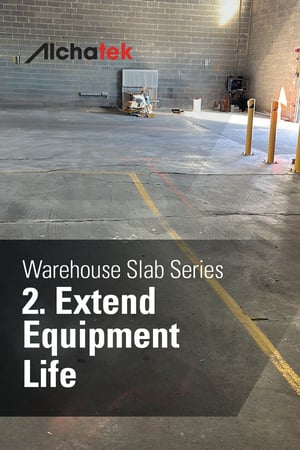 In a warehouse or distribution center, the condition of the floor can have a direct impact on the lifespan of material-handling equipment like forklifts, pallet jacks, and conveyors. Uneven or unstable floors can cause excessive wear and tear on these machines, leading to frequent breakdowns and increased maintenance costs. Over time, this can significantly reduce the lifespan of expensive equipment, necessitating premature replacements and adding to operational costs.
In a warehouse or distribution center, the condition of the floor can have a direct impact on the lifespan of material-handling equipment like forklifts, pallet jacks, and conveyors. Uneven or unstable floors can cause excessive wear and tear on these machines, leading to frequent breakdowns and increased maintenance costs. Over time, this can significantly reduce the lifespan of expensive equipment, necessitating premature replacements and adding to operational costs.
 Operational downtime in a warehouse setting has far-reaching consequences that go beyond the immediate financial losses. When a warehouse floor requires repair, the disruption to the supply chain can be significant. Suppliers and customers alike feel the impact of delays, and the ripple effect can damage relationships and erode trust. Additionally, downtime affects employee productivity and morale, leading to a potential decrease in work quality and an increase in turnover rates. In a just-in-time supply chain, even a brief period of downtime can result in stockouts at retail locations, leading to lost sales and damaged customer relationships.
Operational downtime in a warehouse setting has far-reaching consequences that go beyond the immediate financial losses. When a warehouse floor requires repair, the disruption to the supply chain can be significant. Suppliers and customers alike feel the impact of delays, and the ripple effect can damage relationships and erode trust. Additionally, downtime affects employee productivity and morale, leading to a potential decrease in work quality and an increase in turnover rates. In a just-in-time supply chain, even a brief period of downtime can result in stockouts at retail locations, leading to lost sales and damaged customer relationships.